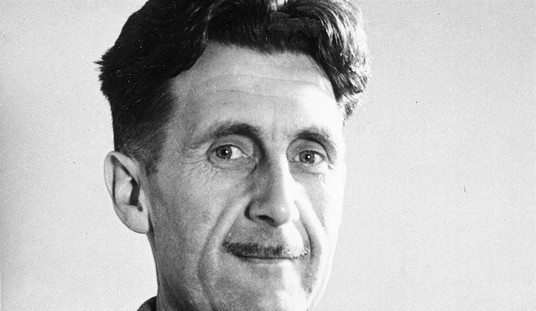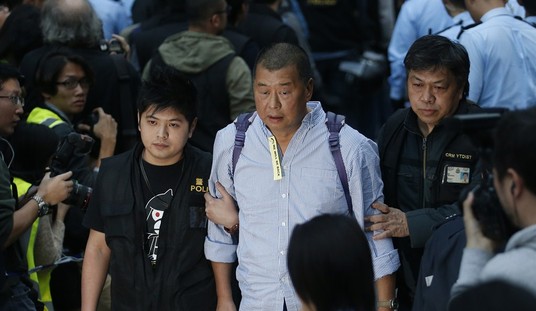With the continued focus on long term brain injuries suffered by NFL players making headlines every month, the league has taken numerous steps to ensure player safety and minimize medical issues. A settlement of more than $750M was paid out to help previously injured players and new rules were put in place. Players taking a blow to the head have to be removed from play and checked immediately before they are allowed to return to the field. Those experiencing a big hit are out of play for weeks while being monitored for problems. New helmets with more cushioning are mandatory, even though players complain that they are easier to knock off and impede play. It’s still not a perfect system, but they’re trying.
But for some observers, that’s simply not enough. Writing at Time Magazine last week, Mia Tramz came up with a new brainstorm which is designed to make the game of football safe as a potato sack race once and for all. Let’s start counting impacts of any type to the helmet during every game and put a limit on how many of them you can take.
So here’s a modest proposal: Count hits to the head in football just as we track pitches in baseball.
The concept of limiting a pitchers’ throws to prevent injury has become gospel throughout baseball, from Little League—where young pitchers must leave the game after reaching pre-set caps—to the pros, despite the fact that there is no scientific consensus about how these numbers actually preserve vulnerable arms…
“I don’t see how a reasonable person would argue that we should count pitches to protect the elbow, but not count hits to protect the brain,” says Stefan Duma, a professor of biomedical engineering at Virginia Tech. Duma’s research has shown that football players as young as seven have sustained head impact at forces similar to a car crash.
They system she envisions employs existing (but very expensive) technology which mounts sensors on helmets and which would cost an estimated $40K per team to implement. That’s a drop in the bucket to an NFL team, but she’s talking about it for college and high school ball as well. That would pretty much terminate football programs at most high schools in my area. But if it’s put in place you could have people checking every tap to the head that takes place (because injury can come from accumulated light hits, not just big, dramatic crashes) and benching any players who exceed the maximum for some set period of time.
My first observation on this proposal is that Ms. Tramz doesn’t spend a lot of time observing the hyper-competitive nature of the NFL. If that rule is in place and I’m on the defense for the Steelers facing the Patriots in the first game of the season, guess what I’m thinking. I’ll be tapping Tom Brady on the helmet every time I come near him… not hard enough to draw a flag, mind you. Just the normal incidental contact which is allowed. If I ring up enough of those over the first half I might be able to bench him for the second half. Then, of course, a new rule will be in place forbidding any contact with the quarterbacks’ helmet and… and… remind me why we’re calling this football again?
The same goes for the rest of the key positions. Before long there won’t be any players left on the field.
But going beyond the basic mechanics of the game, this “hit counter” idea speaks to the larger problem with the idea of bubble wrapping football or other contact sports. What this is basically doing is dumbing down and eventually eliminating such competition. How much protection must the players get when they’re not even asking for it?
Look.. football is a rough game. When you do it professionally it’s a physically demanding and, yes, “dangerous” job. But why is it getting all of the attention? I’d expect that Ms. Tramz should be going after boxing first, shouldn’t she? After all, one of the key objectives of the sweet science is for massive, muscular men to hit each other in the head as hard as they can for up to 36 minutes per contest at the top tier. Other sports follow similar patterns to lesser degrees.
But sports aren’t the only tough, physical jobs out there. I have a friend who worked for decades on a road paving crew. His hands and feet are wrecked and he deals with constant, early arthritis problems. He has scars from hot asphalt burns that will never go away. But he made pretty good money and he never quit. Shall we eliminate that job or demand that robots do the physical labor where people get banged up at work on a regular basis? Some things can be minimized but never entirely eliminated. At least the football players make millions of dollars and have some of the best health care in the world to take care of them if they are injured. Your average telephone lineman can’t say the same.
I want football to be as safe as can be managed for the players and if there’s better equipment (which still allows them to play) in the works, bring it on. But we’re well past the point of diminishing returns in this argument. Perhaps the next question is whether or not we should allow any adult to voluntarily take a job where they might be injured. If your answer is no then a lot of things aren’t going to get done. Some professions are more dangerous than other jobs, but they still need to get done. We don’t need to bubble wrap the entire world.







Join the conversation as a VIP Member